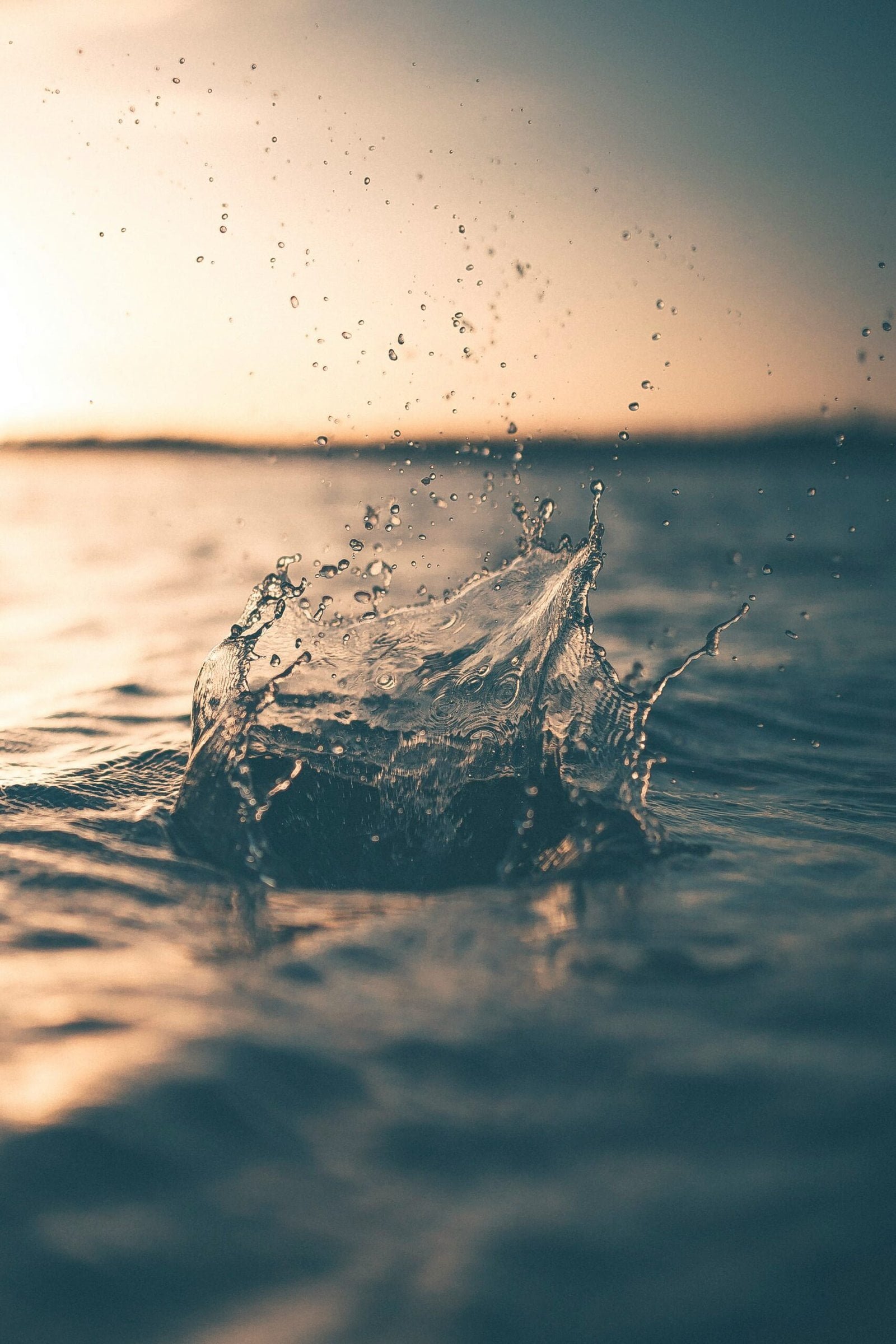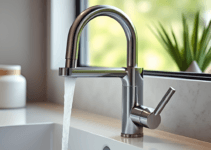Discover essential insights on water damage, its causes, and financial impacts in both residential and commercial properties. Learn about preventive measures, the importance of regular maintenance, and the role of insurance in mitigating costs. Equip yourself with the knowledge to protect your property and financial well-being from the devastating effects of water damage.
Introduction to Water Damage
Water damage refers to the destructive force that water can have on a structure, whether it’s a home or commercial property. It encompasses a variety of scenarios, including flooding, leaks, and burst pipes. Each type of water damage presents unique challenges and can lead to significant financial and structural consequences if not promptly addressed.

Flooding is one of the most severe forms of water damage, often caused by natural disasters such as hurricanes or heavy rainstorms. This type of water damage can result in widespread devastation, affecting large areas and leading to extensive cleanup and repair costs. Leaks, on the other hand, are typically more insidious, originating from malfunctioning appliances, plumbing issues, or compromised roofing. While seemingly minor, these leaks can contribute to significant damage over time if left unchecked.
Please, read our post and do not forget to check our YouTube channel “Grig Stamate”:
https://www.youtube.com/@GrigStamate
You will find there, thousands of designing, furnishing, and decorating ideas for your home interior and outdoors.
Allow me to mention one of them:
Modern Bathrooms | Interior Design Ideas #7 (video)
Burst pipes represent another common cause of water damage. Often occurring during colder months when water within pipes can freeze and expand, leading to ruptures. The sudden release of water can inundate walls, floors, and ceilings, necessitating immediate intervention to mitigate further harm.
Water damage can occur in both residential and commercial properties. In homes, water damage might manifest as discolored walls, peeling paint, or warped flooring. In commercial settings, it could disrupt operations, damage inventory, and erode structural integrity. Recognizing the initial signs of water damage is crucial for timely intervention. Common indicators include a musty odor, visible mold growth, damp surfaces, or an unexplained increase in water bills.
Understanding these early warning signs and the various ways water damage can occur is essential for both prevention and effective response. By being vigilant and proactive, property owners can reduce the risk of severe damage and the associated financial implications.
Common Causes of Water Damage
Water damage can stem from a multitude of sources, each with unique characteristics yet equally capable of causing substantial financial impact. Natural disasters are prominent contributors, with hurricanes and heavy rainfall frequently leading to flooding and subsequent water damage. Hurricanes bring torrential rains, high winds, and storm surges that can inundate homes and businesses, wreaking havoc on structures and belongings alike. Similarly, heavy rainfall, even without the presence of a hurricane, can overwhelm drainage systems and lead to significant water intrusion.
Human-related issues are equally prevalent in causing water damage. Plumbing failures, for instance, are a common culprit. Burst pipes, leaking faucets, and malfunctioning water heaters can release vast amounts of water into living spaces, leading to costly repairs and restoration. The aging infrastructure in many buildings exacerbates this risk, as older pipes are more prone to deterioration and failure. Additionally, appliance malfunctions, such as broken washing machines, dishwashers, or refrigerators, can result in considerable water spillage, often going unnoticed until substantial damage has occurred.
Poor maintenance also plays a pivotal role in water damage incidents. Neglecting routine inspections and upkeep of property infrastructure can lead to undetected leaks and seepage. Roofs, gutters, and downspouts that are not regularly cleaned and maintained can accumulate debris, leading to water overflow and infiltration. Furthermore, improperly sealed windows and doors can allow water to enter, especially during severe weather conditions. Regular maintenance and timely repairs are essential to mitigate these risks and prevent water damage from escalating.
Understanding these common causes of water damage is crucial for homeowners and business owners alike. By recognizing the potential sources and implementing preventive measures, individuals can significantly reduce the likelihood of encountering the financial burdens associated with water damage.
Immediate Financial Impact
Water damage can have a profound and immediate financial impact on property owners. When water intrusion occurs, the first step often involves securing emergency services. These services typically include water extraction and drying processes, which can be crucial in mitigating further damage. The cost for these emergency measures can vary significantly, but on average, homeowners might expect to pay between $1,000 to $4,000 depending on the severity and extent of the damage.
In situations where the water damage is extensive, temporary housing might become a necessity. Displacement due to uninhabitable conditions can incur additional costs, averaging around $100 to $200 per night for short-term lodging. This expense can quickly accumulate, particularly if repairs are projected to extend over several weeks or months.
Immediate repairs are another critical aspect of addressing water damage. These repairs are aimed at halting further deterioration and may include tasks like fixing broken pipes, replacing damaged drywall, and restoring compromised flooring. The cost for these initial repairs can be substantial, often ranging from $500 to $2,500 depending on the specific requirements and area affected.
To illustrate the financial burden water damage can impose, consider the case of a homeowner who experiences a burst pipe. The water extraction and drying services cost $3,000, temporary housing for two weeks amounts to $1,400, and immediate repairs tally up to $2,000. In this scenario, the homeowner faces an immediate financial impact of $6,400, which can be a significant strain on personal finances, especially if not covered by insurance.
Understanding these immediate costs highlights the importance of proactive measures and adequate insurance coverage to mitigate the financial risks associated with water damage. Property owners should be aware of the potential for such incidents and plan accordingly to ensure they are prepared to handle the immediate financial implications.
Long-Term Financial Consequences
Water damage can have profound long-term financial consequences that extend far beyond the immediate costs of cleanup and repair. One of the most significant ongoing expenses is related to mold remediation. Mold thrives in damp environments, and once it takes hold, it can spread rapidly, requiring professional intervention to eliminate. The costs of mold remediation can be substantial, often ranging from a few hundred to several thousand dollars, depending on the extent of the infestation.
Structural repairs represent another major financial burden. Water can weaken the integrity of a building’s foundation, walls, and floors, necessitating extensive and costly repairs. Over time, untreated water damage can lead to severe structural issues that compromise the safety of the property. These repairs are not only expensive but also crucial to maintaining the property’s value and ensuring the safety of its occupants.
Health impacts resulting from water damage can also lead to significant financial strain. Exposure to mold and damp environments can cause respiratory issues, allergies, and other health problems that may require medical attention. The costs associated with healthcare, including doctor visits, medications, and potential long-term treatments, can add up quickly, placing an additional financial burden on affected individuals and families.
Moreover, water damage can lead to a depreciation in property value. Prospective buyers are often wary of properties with a history of water damage, even if repairs have been made. This can result in lower offers and reduced marketability, ultimately impacting the homeowner’s return on investment. Additionally, properties with water damage histories may face increased insurance premiums. Insurers view these properties as higher risk, leading to higher premiums and potentially more restrictive policy terms.
In summary, the long-term financial consequences of water damage are multifaceted, encompassing mold remediation, structural repairs, health-related costs, depreciation in property value, and increased insurance premiums. These factors highlight the importance of addressing water damage promptly and thoroughly to mitigate ongoing financial impacts.
Cost Breakdown by Type of Damage
Water damage can vary significantly in terms of financial impact, depending on the severity and type of incident. Understanding these costs is crucial for property owners to prepare adequately. Minor issues like small leaks can incur relatively modest expenses, while catastrophic events such as major flooding can lead to overwhelming financial burdens.
For minor water damage, such as small leaks, the average cost ranges from $150 to $500. These expenses typically cover the repair of leaking pipes, minor drywall repairs, and basic water extraction. Although seemingly insignificant, these small leaks, if left unattended, can lead to more substantial problems, escalating the costs dramatically over time.
Moderate water damage, often resulting from situations like a burst pipe or an overflowing appliance, can be more costly. The financial impact for such scenarios generally falls between $1,000 and $4,000. This range includes expenses for more extensive water extraction, sanitization, and repairs to affected flooring and walls. The restoration of personal belongings, such as furniture and electronics, also contributes to these costs.
Severe water damage, typically associated with significant flooding events, whether due to natural disasters or major plumbing failures, can be financially devastating. The costs for dealing with severe water damage can start from $10,000 and easily exceed $20,000. In these cases, the expenses include comprehensive water removal, structural drying, mold remediation, and extensive repairs to the property’s structural elements. Additionally, the replacement of personal possessions and potential temporary relocation costs add to the overall financial burden.
Data from industry reports indicate that the average insurance claim for water damage is approximately $11,000, underscoring the substantial financial risk posed by such incidents. Moreover, the frequency of water damage claims has been on the rise, further highlighting the need for understanding and preparing for these potential expenses.
By being aware of the potential costs associated with different types of water damage, property owners can take proactive measures, such as regular maintenance and adequate insurance coverage, to mitigate the financial impact when such unfortunate events occur.
Insurance and Water Damage
Insurance plays a crucial role in mitigating the financial impact of water damage. Standard homeowners’ insurance policies typically cover sudden and accidental water damage, such as that caused by burst pipes, rain through a damaged roof, or accidental overflows from appliances. However, these policies often have significant exclusions, which homeowners need to be aware of.
One common exclusion in standard policies is damage caused by flooding. For this reason, flood insurance is an essential additional coverage for those in flood-prone areas. Flood insurance, which can be obtained through the National Flood Insurance Program (NFIP) or private insurers, covers damages resulting from natural flooding events, such as storm surges, hurricanes, or heavy rainstorms. Without this coverage, homeowners could face substantial out-of-pocket costs.
Additionally, gradual water damage, such as that caused by a slow leak or ongoing seepage, is often not covered by standard homeowners’ policies. Homeowners are usually expected to perform regular maintenance to prevent such issues. Mold damage, which can result from untreated water damage, is another area where coverage can vary significantly. Some policies may cover mold removal and repairs, while others may exclude it entirely.
When dealing with water damage, it is crucial to understand the claims process to ensure that expenses are covered. Homeowners should document the damage thoroughly with photos and detailed descriptions. Promptly reporting the damage to the insurance company is also essential, as delays can lead to claim denials. It is advisable to keep all receipts and records of any temporary repairs or expenses incurred to prevent further damage, as these can support the claim.
Dealing with insurance companies can be complex, but there are several tips to navigate the process more smoothly. Homeowners should review their policies regularly to understand the coverage and exclusions. Having an open line of communication with the insurance adjuster and seeking clarification when needed can also be beneficial. In some cases, hiring a public adjuster or a professional to assess the damage and advocate on behalf of the homeowner can help in securing a fair settlement.
Preventive Measures to Minimize Risk
To mitigate the financial impact of water damage, adopting a proactive approach with preventive measures is essential. Regular maintenance is a cornerstone in minimizing the risk. Begin with inspecting your plumbing system at least annually. Check for any leaks, corrosion, or wear and tear in pipes and fixtures. Promptly address any issues to prevent minor leaks from escalating into significant water damage.
Another effective preventive measure is the installation of water detection devices. These devices are crucial in early identification of leaks or floods. Place them in high-risk areas such as basements, kitchens, and bathrooms. Smart water detectors can send alerts to your phone, enabling immediate action to prevent extensive damage. Investing in these devices could save substantial repair costs in the long term.
Improving your property’s drainage system is also vital. Ensure that gutters and downspouts are clear of debris and functioning correctly. Properly directing water away from your property is critical in preventing water accumulation around the foundation, which can lead to seepage and structural damage. Additionally, consider grading your landscape to slope away from the building, further reducing the risk of water pooling near the foundation.
For properties in areas prone to heavy rainfall or flooding, installing a sump pump in the basement can be a game-changer. Sump pumps effectively remove accumulated water, preventing it from causing damage. Regularly test your sump pump to ensure it is operational, and consider having a battery backup in case of power outages.
Sealing windows and doors is another practical step. Check for any gaps or cracks and use weatherstripping or caulk to seal them. This not only prevents water ingress but also enhances energy efficiency. Additionally, regular roof inspections are necessary to identify and repair any damaged or missing shingles, thereby preventing water from entering through the roof.
By incorporating these preventive measures, property owners can significantly reduce the risk of water damage and the associated financial burdens. Regular maintenance, early detection, and strategic property improvements are key to safeguarding one’s investment.
Conclusion: Being Prepared for Water Damage
Water damage represents a significant financial burden for homeowners and businesses alike. Throughout this post, we have explored the extensive costs associated with water damage, including structural repairs, mold remediation, and the replacement of personal property. Understanding these potential expenses is crucial for anyone looking to safeguard their assets and financial stability.
One of the primary takeaways is the necessity of being proactive in water damage prevention. Regular maintenance of plumbing systems, roofs, and drainage systems can mitigate the risk of water intrusion. Additionally, installing water leak detection devices and ensuring proper home insulation are practical steps that can prevent minor issues from escalating into major financial setbacks.
Another vital aspect covered was the importance of comprehensive insurance coverage. Reviewing and understanding your insurance policy can make a substantial difference in the event of water damage. It is essential to ensure that your policy covers not only the cost of repairs but also additional expenses such as temporary housing and potential business interruptions.
Being prepared for water damage also means having an emergency plan in place. This includes knowing the contact information for local emergency services, trusted contractors, and your insurance provider. Quick response times can significantly reduce the extent of damage and, consequently, the associated costs.
In conclusion, the financial impact of water damage can be overwhelming, but with proper preparedness and preventive measures, it is possible to minimize these costs. We urge you to take action today: review your insurance policies, conduct regular home maintenance, and develop a comprehensive emergency plan. By doing so, you can protect your property and your financial well-being.
Other related posts from our website:
https://howtobuildahouseblog.com/how-you-can-avoid-water-damage-in-the-winter/
https://howtobuildahouseblog.com/carpet-cleaning-and-drying-after-water-damage/
https://howtobuildahouseblog.com/preventing-water-damage/
Thank you so much for your attention.
Stay tuned. We will upload many other amazing posts to our website and videos onto our YouTube channel.
Thank you so much.
for your time and attention.
Best Regards
See you to another post,
Bye, Bye



No Responses